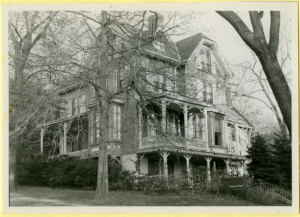One of Chatham’s most overlooked gems is the Olkes Collection, which contains hundreds of African artworks. Housed in the Woodland Gallery and the primary subject of one of the university’s Museum Studies courses, Curating African Art, it is rarely showcased to visitors due to both a lack of proper security and a shocking lack of interest on-campus.
When I came to Chatham in the fall of 2010, I entered as a Creative Writing major. Even so, it wasn’t long before I became an Art History major instead. One of the most promising and, in today’s contemporary art scene, most challenging fields out there, I felt thrilled to choose the museum world as my career path.
By the time I became a Senior, the art history program had vanished as its own major and had instead been reduced to a mere concentration in the Visual Arts major. The logical answer for this sad turn of events is simply that Chatham University did not have enough interested recruits.
But how could they when no marketing was given to the department? Chatham University’s numerous brochures boast for pages upon pages of their interest in global issues, politics, environmental studies, and science – and their renowned English department, whose professors have (quite deservingly) received many accolades.
However, the Olkes Collection, art history program, and Museum Studies minor were rarely mentioned. In fact, as Chatham pours millions of dollars into the Eden Hall Farm project (which has so far served only to artificially impress donors and alumni rather than serve current students), they have cut opportunities for student jobs, refused to fix faucets, pianos and other parts of their mansion-like dorms, taken away beloved student spots such as the Weathervane, and major by major, are slimming down their academic offerings.
Any other university in the country who offers a strong art history program, especially one with such a spectacularly focused collection and a close proximity to world-renowned museums such as the Carnegie International, would boast about these things. Chatham, however, has never said so much as a peep. I only knew about the major, in fact, after purposefully scrolling for it after taking interest in an art history survey course in high school.
If Chatham is to proclaim itself to be a powerful liberal arts school, then it must not ignore the study which so strongly encapsulates the visual culture and material evidence of our past, present and future. The wise choice would not have been to cut back on, but to build on their program (which has offered classes as varied as African Art, 19th Century European Art, Asian Art, and even special topics, such as Women in Art), to expand and market the Art History major, including welcoming new professors and redesigning the Woodland Gallery.
The new gallery could not only beautifully display the entire Olkes Collection, but might have also included a separate gallery, connected by doors, for student, faculty and guest exhibitions. Even better, would have been regular hours for the Woodland Gallery’s opening, regular security members on-site to protect the items, and, perhaps, even full-time staff members to research and restore the university’s art collection, both in a research room in the gallery, and in an off-site storage space for works not currently in view (perhaps at Eden Hall?).
Chatham University has always taught its students to be world-ready women. With an increasingly limited number of disciplines offered at the school, how can this be possible if we are not allowed, in college of all places, to explore different subject matter and improve upon those dear to our hearts?
How is it possible that they are able to quietly lock away studies, which–despite their important influence in the world at large–are strangely ignored in our own supposedly progressive academic halls? Take, for example, the Carnegie International, which made headlines not just in Pittsburgh but around the world this year for using groundbreaking contemporary art to bring light to important issues, including poverty, war, and discrimination. Art and its study must never, can never, and should never be removed from the liberal arts.






